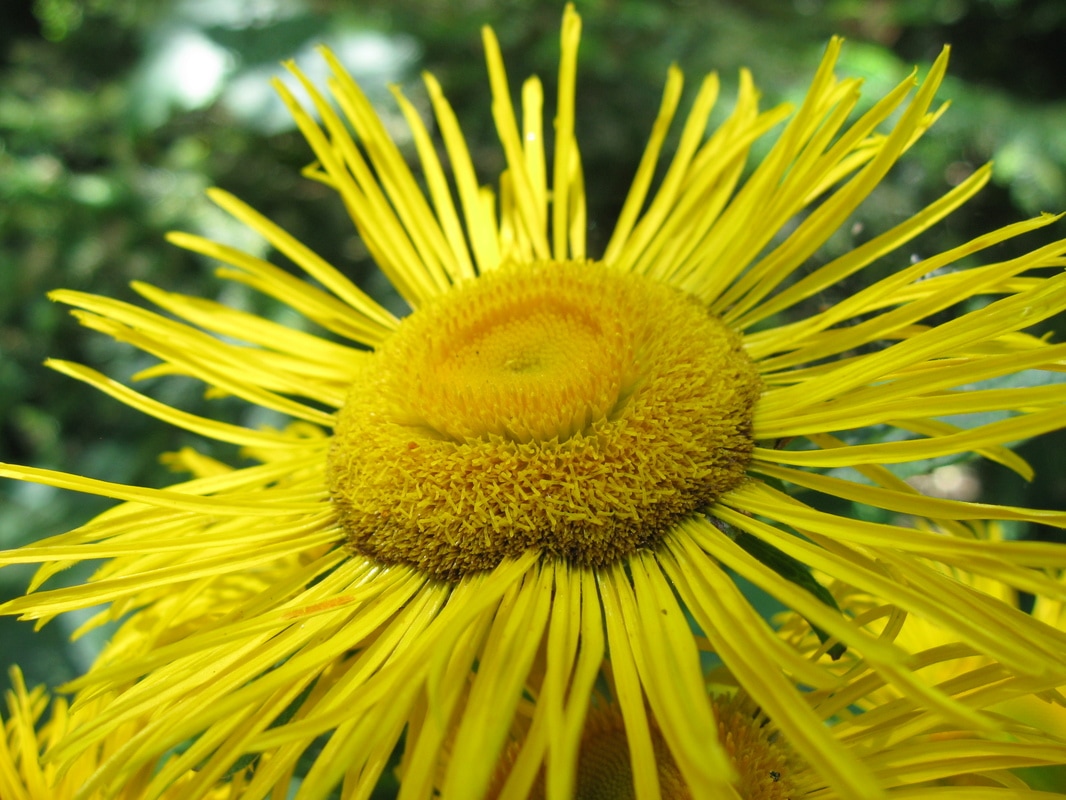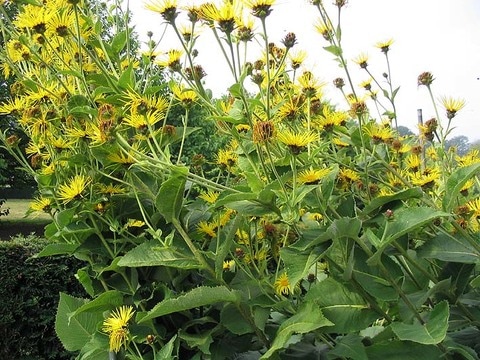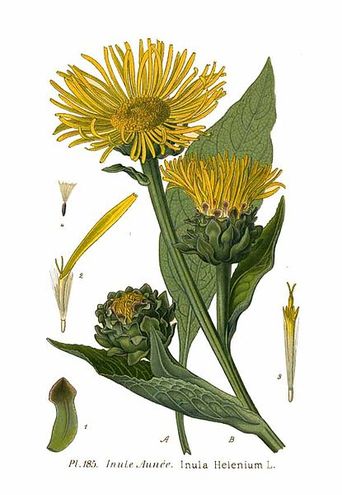|
Elecampane is one of my favorite herbs. But I must admit that it can be an acquired taste, and many people don’t get past its surprisingly pungent and forceful flavor, eschewing it for more mellow-tasting herbs. However, once you give it a chance there are many gifts to be gained from this beautiful, graceful and healing plant. Before we get to its use in herbalism, I want to note that elecampane is often planted in gardens due to its tall stature and beautiful flowers. It is a relative of the sunflower and you can see the resemblance in the cheery, long, yellow petals and in its graceful height. This plant will grow taller than a human! Elecampane takes its botanical name, Inula helenium, from the legend of Helen of Troy. Legend has it that the plant sprung up in the places where her tears fell when she was kidnapped from her home. The pungent root is the part used in herbal medicine; it is harvested in the autumn when the plant is two or three years old. The taste of the fresh or dried root is strong: it imparts a bitter, spicy and warming flavor all at once. Elecampane is most famous for its ability to strengthen and support the respiratory system. It is known as one of the best herbal expectorants for congested and stuck mucus in the chest, phlegm-y coughs, and for many respiratory infections, such as bronchitis. It can reach deep into the lungs and gets things moving again by clearing and releasing old infected mucus. Emotionally it is also used for grief and sadness that is stored in the lungs. A strong antiseptic and bactericide that helps resolve bacterial infection elecampane will change thick, green, infected mucus to white or clear mucus. Old herbal writings also indicated the use of it for shortness of breath and swollen and inflamed respiratory conditions. In addition to its wonderful respiratory properties, the bitter properties of the root stimulate the appetite, overall digestive function and help increase the flow of bile from the liver to the small intestine. Traditionally it was used for all sorts of digestive woes from intestinal parasites to stagnant digestion to imbalanced intestinal flora. In fact, another amazing attribute of elecampane is that the root is a rich source of source of inulin. This is a storage carbohydrate found in some plants which feeds and supports healthy digestive flora, acting as a prebiotic, i.e. food for our good gut flora. HOW TO USE:
➤ To make a decoction of the root, place 1 tablespoon dried root in 2 cups of water in a small saucepan. Bring to a boil then lower to a simmer and cover. Let cook for 15 to 20 minutes, then strain out the root. Note: Avoid elecampane during pregnancy. RECIPE: Elecampane Infused Honey
|
Categories
All
Archives
January 2022
|


